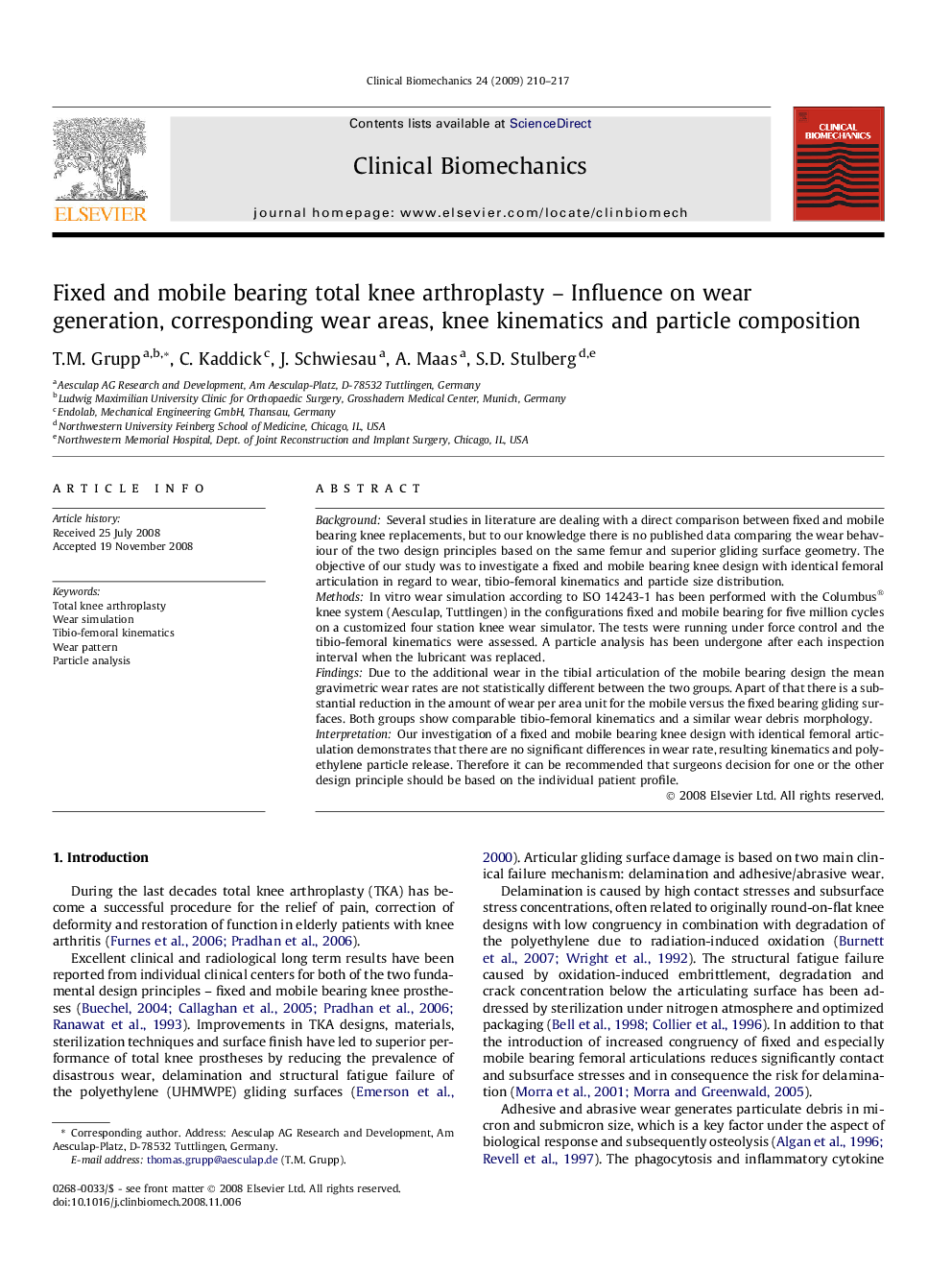| Article ID | Journal | Published Year | Pages | File Type |
|---|---|---|---|---|
| 4051030 | Clinical Biomechanics | 2009 | 8 Pages |
BackgroundSeveral studies in literature are dealing with a direct comparison between fixed and mobile bearing knee replacements, but to our knowledge there is no published data comparing the wear behaviour of the two design principles based on the same femur and superior gliding surface geometry. The objective of our study was to investigate a fixed and mobile bearing knee design with identical femoral articulation in regard to wear, tibio-femoral kinematics and particle size distribution.MethodsIn vitro wear simulation according to ISO 14243-1 has been performed with the Columbus® knee system (Aesculap, Tuttlingen) in the configurations fixed and mobile bearing for five million cycles on a customized four station knee wear simulator. The tests were running under force control and the tibio-femoral kinematics were assessed. A particle analysis has been undergone after each inspection interval when the lubricant was replaced.FindingsDue to the additional wear in the tibial articulation of the mobile bearing design the mean gravimetric wear rates are not statistically different between the two groups. Apart of that there is a substantial reduction in the amount of wear per area unit for the mobile versus the fixed bearing gliding surfaces. Both groups show comparable tibio-femoral kinematics and a similar wear debris morphology.InterpretationOur investigation of a fixed and mobile bearing knee design with identical femoral articulation demonstrates that there are no significant differences in wear rate, resulting kinematics and polyethylene particle release. Therefore it can be recommended that surgeons decision for one or the other design principle should be based on the individual patient profile.
